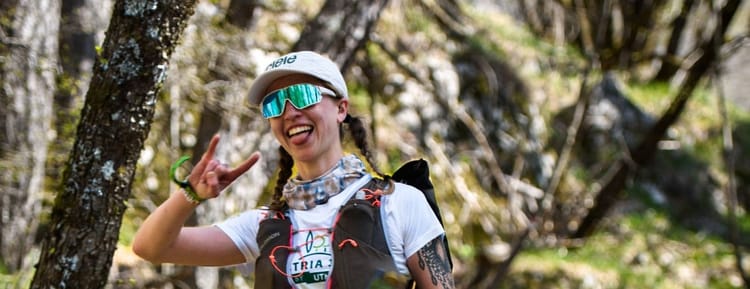Sunshine & Safety: Your Guide to Summer Wildlife Encounters in New Brunswick!

Words by John Ritchie
Summertime in New Brunswick—the days are long, the air is warm, and the outdoors are hard to resist. From the rugged Fundy coastline to the pine-dense forests supported by JDI, our province offers plenty for those who enjoy spending time outside. However, as we explore these natural spaces, it’s important to remember that we’re sharing them with a variety of wildlife. A bit of preparation can go a long way in keeping both ourselves and our wild neighbours safe.
Before you head out, here are a few tips to help ensure your wildlife encounters this summer in New Brunswick are both safe and respectful.
Respect Their Space: The Golden Rule
The most important guideline for wildlife safety is to keep your distance. Whether it’s a moose grazing by the roadside or a coyote moving through the trees, it’s essential to remember that these are wild animals—and their behaviour can be unpredictable.
- Admire from afar: The best view is often from a safe distance. Avoid the temptation to move closer for a better photo—this is where a zoom lens can come in handy.
- Never feed wildlife: Feeding wild animals, even those that seem harmless like squirrels, can cause them to lose their natural foraging instincts and become dependent on humans. It also increases the risk of aggressive behaviour and can lead to animals being relocated or, sadly, euthanized. It’s best to keep wildlife wild.
- Secure food and attractants: If you’re camping or picnicking, store all food, garbage, and scented items—such as toiletries—in sealed, animal-proof containers or inside your vehicle. Tents do not offer protection against wildlife and are NOT bear-proof! Be sure to clean up thoroughly and remove all food scraps.
Know Your Neighbours: What to Do When You Encounter Wildlife
New Brunswick boasts a diverse range of wildlife. Here's a quick guide to some common summer encounters:
- Black Bears: Black bears are present throughout the province. If you see one:
- Stay calm and do NOT run. Running can trigger a chase instinct.
- Make yourself look big. Raise your arms above your head, stand tall, and slowly wave them.
- Make noise. Talk calmly and firmly to let the bear know you're human. If it's still present, make loud noises like yelling or banging pots (if you have them).
- Back away slowly. Keep the bear in sight without making direct eye contact.
- Consider carrying bear spray and know how to use it before you head out.
- If a bear shows defensive behaviour (ears back, huffing), try to appear non-threatening. If it continues to approach, stand your ground and be prepared to use bear spray—if you carry it and know how to use it.
- If a bear makes physical contact, fight back aggressively, aiming for the nose and eyes. Do NOT play dead.
- Moose: These gentle giants can be intimidating due to their size, and while generally placid, they can become aggressive if they feel threatened or have calves nearby. If spotted:
- Give them ample space. If you see a moose, admire it from a significant distance.
- Watch for warning signs. Pinned ears, raised hair on their neck, lip licking, or head jerking can indicate agitation.
- Keep dogs leashed. Moose can mistake dogs for wolves and perceive them as a threat.
- If a moose acts aggressively or charges, back away slowly. If it charges, run and try to put a large object (like a tree or vehicle) between yourself and the moose.
- Coyotes: These intelligent canids are often seen in both rural and urban areas. When encountered:
- Don’t be alarmed. They are usually just looking for food and water.
- If a coyote approaches you or seems too comfortable, make loud noises, wave your arms, and even throw objects towards (but not at) it to scare it away. This is called hazing and helps them maintain their natural wariness of humans.
- Never leave small children or pets unattended where coyotes might be present. Keep dogs on leashes, especially in areas known for coyote activity, as they may see dogs as competition or a threat to their young.
Beyond the Big Beasts: Other Summer Considerations
- Ticks and Lyme Disease: Summer in New Brunswick means ticks! These tiny arachnids can carry Lyme disease and other serious illnesses. To avoid bites:
- Wear long pants and long-sleeved shirts in wooded or grassy areas. Light colours offer the advantage of being able to spot ticks easily.
- Tuck your pants into your socks. Yes, it may look silly, but it offers additional protection.
- Use insect repellent containing DEET or Icaridin.
- Do a thorough tick check on yourself, your children, and your pets after every outdoor excursion. Pay attention to hairlines, behind ears, armpits, and groin areas.
- If bitten, remove ticks carefully with fine-tipped tweezers, grasping as close to the skin as possible and pulling straight up.
- Monitor for symptoms like a bullseye rash, fever, or fatigue, and seek medical attention if they appear. Tick populations have been increasing, so caution is essential.
- Poison Ivy & Other Irritants: New Brunswick's lush landscape also includes some plants best admired from a distance. Some tips:
- "Leaves of three, let it be" remains a good rule for identifying poison ivy, which can cause an itchy, blistering rash.
- Learn to identify other potentially irritating plants like giant hogweed or wild parsnip, which can cause severe skin reactions upon contact, especially when exposed to sunlight.
Be a Responsible Outdoor Enthusiast
- Stay on marked trails to protect both yourself and sensitive environments.
- Pack out what you pack in. Leave no trace behind. This includes all garbage, food scraps, and even organic materials that aren't native to the area.
- Tell someone your plans. Always let someone know where you're going and when you expect to return, especially if you're venturing into remote areas.
- Carry a first-aid kit for minor injuries or unexpected situations.
Summer in New Brunswick offers many opportunities to enjoy the outdoors. By staying informed, prepared, and respectful of wildlife, you can help ensure that your time outside is both enjoyable and safe—for yourself, others, and the animals that call this province home. So get out there, explore, and soak up that beautiful East Coast sunshine responsibly! Happy trails!


